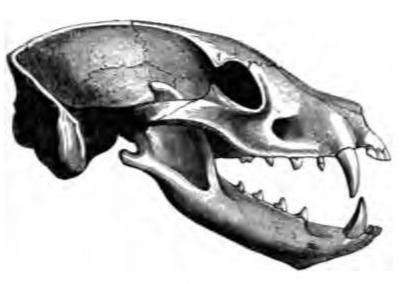|
Vespertilionid
Vespertilionidae is a family of microbats, of the order Chiroptera, flying, insect-eating mammals variously described as the common, vesper, or simple nosed bats. The vespertilionid family is the most diverse and widely distributed of bat families, specialised in many forms to occupy a range of habitats and ecological circumstances, and it is frequently observed or the subject of research. The facial features of the species are often simple, as they mainly rely on vocally emitted echolocation. The tails of the species are enclosed by the lower flight membranes between the legs. Over 300 species are distributed all over the world, on every continent except Antarctica. It owes its name to the genus '' Vespertilio'', which takes its name from a word for bat, ', derived from the Latin term ' meaning 'evening'; they are termed "evening bats" and were once referred to as "evening birds". (The term "evening bat" also often refers more specifically to one of the species, ''Nycticeius hu ... [...More Info...] [...Related Items...] OR: [Wikipedia] [Google] [Baidu] |
Evening Bat
The evening bat (''Nycticeius humeralis'') is a species of bat in the vesper bat family that is native to North America. Hunting at night, they eat beetles, moths, and other flying insects. Description The evening bat is a small bat weighing found throughout much of the midwestern and eastern United States. Their forearms are in length. The tip of each dorsal hair is a light gray, and one to two-thirds of the basal is dark brown. Though there have been some cases of white pelage, the majority of the population is mostly brown in color.Watkins, L. C. (1972). Nycticeius humeralis. Mammalian species, (23), 1-4. They have wide, dog-like muzzles, pronounced facial glands, and disproportionately large bacula. Evening bats can be mistaken for juvenile big brown bats, due to their physical resemblance but smaller size. Morphology Evening bats have relatively robust jaws, compared to other insectivorous bats. They have an unkeeled calcar and a short, round tragus.Barbour, R., ... [...More Info...] [...Related Items...] OR: [Wikipedia] [Google] [Baidu] |
Greater Mouse-eared Bat
The greater mouse-eared bat (''Myotis myotis'') is a European species of bat in the family Vespertilionidae. Description ''Myotis myotis'' is a large bat with a long, broad muzzle and big, long ears. The body's dorsal side is brown to reddish-brown, while the ventral side is dirty white or beige. The tragus forms half of the ear, with a small black tip in most individuals. Wing membranes are brownish in colour. The Greater mouse-eared bat is relatively large for a member of the genus ''Myotis'', weighing up to and measuring 8 to 9 cm from head to tail (a little larger than a house mouse, ''Mus musculus''), making it one of the largest European bats. It has a 40 cm wingspan, with a forearm length of 6 cm, and a 4 to 5 cm long tail. The average lifespan of a greater mouse-eared bat is 3–4 years, although particular individuals have lived up to 14 years. Distribution The greater mouse-eared bat can be found throughout Europe, with populations in most Europea ... [...More Info...] [...Related Items...] OR: [Wikipedia] [Google] [Baidu] |
Early Eocene
In the geologic timescale the Ypresian is the oldest age (geology), age or lowest stage (stratigraphy), stratigraphic stage of the Eocene. It spans the time between , is preceded by the Thanetian Age (part of the Paleocene) and is followed by the Eocene Lutetian Age. The Ypresian is consistent with the lower Eocene. Events The Ypresian Age begins during the throes of the Paleocene–Eocene Thermal Maximum (PETM). The Fur Formation in Denmark, the Messel shales in Germany, the Oise amber of France and Cambay amber of India are of this age. The Eocene Okanagan Highlands are an uplands subtropical to temperate series of lakes from the Ypresian. Stratigraphic definition The Ypresian Stage was introduced in scientific literature by Belgium, Belgian geologist André Hubert Dumont in 1850. The Ypresian is named after the Flanders, Flemish city of Ypres in Belgium (spelled ''Ieper'' in Dutch). The definitions of the original stage were totally different from the modern ones. The Ypresi ... [...More Info...] [...Related Items...] OR: [Wikipedia] [Google] [Baidu] |
Pizonyx
The mouse-eared bats or myotises are a diverse and widespread genus (''Myotis'') of bats within the family Vespertilionidae. The noun "''myotis''" itself is a New Latin construction, from the Greek "''muós'' (meaning "mouse") and "''oûs''" (meaning ear), literally translating to "mouse-eared". Relationships ''Myotis'' has historically been included in the subfamily Vespertilioninae, but was classified in its own subfamily, Myotinae, by Nancy Simmons in 1998. In her 2005 classification in '' Mammal Species of the World'', Simmons listed the genera '' Cistugo'' and '' Lasionycteris'' in the Myotinae in addition to ''Myotis'' itself.Simmons, 2005, p. 499 However, molecular data indicate that ''Cistugo'' is distantly related to all other Vespertilionidae, so it was reclassified into its own family, the Cistugidae, and that ''Lasionycteris'' belongs in the Vespertilioninae.Roehrs et al., 2010 The genus ''Submyotodon'' has since been added to the subfamily, making it and ''Myotis'' ... [...More Info...] [...Related Items...] OR: [Wikipedia] [Google] [Baidu] |
Insectivore
A robber fly eating a hoverfly An insectivore is a carnivorous animal or plant that eats insects. An alternative term is entomophage, which can also refer to the human practice of eating insects. The first vertebrate insectivores were amphibians. When they evolved 400 million years ago, the first amphibians were piscivores, with numerous sharp conical teeth, much like a modern crocodile. The same tooth arrangement is however also suited for eating animals with exoskeletons, thus the ability to eat insects is an extension of piscivory. At one time, insectivorous mammals were scientifically classified in an order called Insectivora. This order is now abandoned, as not all insectivorous mammals are closely related. Most of the Insectivora taxa have been reclassified; those that have not yet been reclassified and found to be truly related to each other remain in the order Eulipotyphla. Although individually small, insects exist in enormous numbers. Insects make u ... [...More Info...] [...Related Items...] OR: [Wikipedia] [Google] [Baidu] |
American Museum Of Natural History
The American Museum of Natural History (abbreviated as AMNH) is a natural history museum on the Upper West Side of Manhattan in New York City. In Theodore Roosevelt Park, across the street from Central Park, the museum complex comprises 26 interconnected buildings housing 45 permanent exhibition halls, in addition to a planetarium and a library. The museum collections contain over 34 million specimens of plants, animals, fossils, minerals, rocks, meteorites, human remains, and human cultural artifacts, as well as specialized collections for frozen tissue and genomic and astrophysical data, of which only a small fraction can be displayed at any given time. The museum occupies more than . AMNH has a full-time scientific staff of 225, sponsors over 120 special field expeditions each year, and averages about five million visits annually. The AMNH is a private 501(c)(3) organization. Its mission statement is: "To discover, interpret, and disseminate—through scientific research ... [...More Info...] [...Related Items...] OR: [Wikipedia] [Google] [Baidu] |
Hawaii
Hawaii ( ; haw, Hawaii or ) is a state in the Western United States, located in the Pacific Ocean about from the U.S. mainland. It is the only U.S. state outside North America, the only state that is an archipelago, and the only state geographically located within the tropics. Hawaii comprises nearly the entire Hawaiian archipelago, 137 volcanic islands spanning that are physiographically and ethnologically part of the Polynesian subregion of Oceania. The state's ocean coastline is consequently the fourth-longest in the U.S., at about . The eight main islands, from northwest to southeast, are Niihau, Kauai, Oahu, Molokai, Lānai, Kahoolawe, Maui, and Hawaii—the last of these, after which the state is named, is often called the "Big Island" or "Hawaii Island" to avoid confusion with the state or archipelago. The uninhabited Northwestern Hawaiian Islands make up most of the Papahānaumokuākea Marine National Monument, the United States' largest prot ... [...More Info...] [...Related Items...] OR: [Wikipedia] [Google] [Baidu] |
Holocene
The Holocene ( ) is the current geological epoch. It began approximately 11,650 cal years Before Present (), after the Last Glacial Period, which concluded with the Holocene glacial retreat. The Holocene and the preceding Pleistocene together form the Quaternary period. The Holocene has been identified with the current warm period, known as MIS 1. It is considered by some to be an interglacial period within the Pleistocene Epoch, called the Flandrian interglacial.Oxford University Press – Why Geography Matters: More Than Ever (book) – "Holocene Humanity" section https://books.google.com/books?id=7P0_sWIcBNsC The Holocene corresponds with the rapid proliferation, growth and impacts of the human species worldwide, including all of its written history, technological revolutions, development of major civilizations, and overall significant transition towards urban living in the present. The human impact on modern-era Earth and its ecosystems may be considered of global ... [...More Info...] [...Related Items...] OR: [Wikipedia] [Google] [Baidu] |
Synemporion Keana
''Synemporion keana'' is an extinct species of bat which lived in what is now Hawaii from at least 320,000 years ago to around 2,100 years ago. It is the only species in the genus ''Synemporion''.Discovery of Extinct Bat Doubles Diversity of Native Hawaiian Land Mammals at the American Museum of Natural History; published March 21, 2016; retrieved June 20, 2016 Fossil discovery The first s of ''Synemporion keana'' were found in a |
Science (journal)
''Science'', also widely referred to as ''Science Magazine'', is the peer-reviewed academic journal of the American Association for the Advancement of Science (AAAS) and one of the world's top academic journals. It was first published in 1880, is currently circulated weekly and has a subscriber base of around 130,000. Because institutional subscriptions and online access serve a larger audience, its estimated readership is over 400,000 people. ''Science'' is based in Washington, D.C., United States, with a second office in Cambridge, UK. Contents The major focus of the journal is publishing important original scientific research and research reviews, but ''Science'' also publishes science-related news, opinions on science policy and other matters of interest to scientists and others who are concerned with the wide implications of science and technology. Unlike most scientific journals, which focus on a specific field, ''Science'' and its rival ''Nature'' cover the full ra ... [...More Info...] [...Related Items...] OR: [Wikipedia] [Google] [Baidu] |
Laurasia
Laurasia () was the more northern of two large landmasses that formed part of the Pangaea supercontinent from around ( Mya), the other being Gondwana. It separated from Gondwana (beginning in the late Triassic period) during the breakup of Pangaea, drifting farther north after the split and finally broke apart with the opening of the North Atlantic Ocean c. 56 Mya. The name is a portmanteau of Laurentia and Asia. Laurentia, Avalonia, Baltica, and a series of smaller terranes, collided in the Caledonian orogeny c. 400 Ma to form Laurussia (also known as Euramerica, or the Old Red Sandstone Continent). Laurussia then collided with Gondwana to form Pangaea. Kazakhstania and Siberia were then added to Pangaea 290–300 Ma to form Laurasia. Laurasia finally became an independent continental mass when Pangaea broke up into Gondwana and Laurasia. Terminology and origin of the concept Laurentia, the Palaeozoic core of North America and continental fragments that now make ... [...More Info...] [...Related Items...] OR: [Wikipedia] [Google] [Baidu] |




